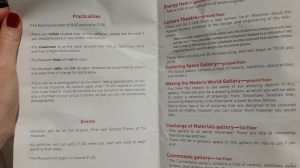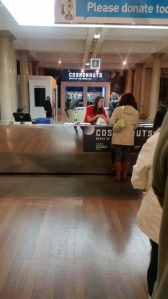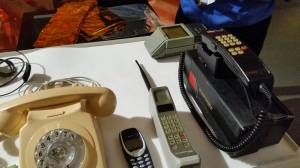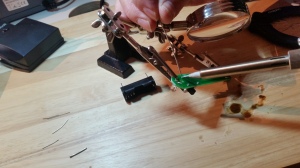 The thing about autism, the thing that makes me most sad, is the misapprehension that it is a childhood affliction. That somehow if you have a child with autism they will ‘grow out of it’. Not true, I am afraid, a child with autism will become an adult with autism. But what about that bit in the middle, the teenage years, those years full of hormones, the difficult years trying to work out who you are, where you are going, trying to understand the body you are growing into. Yes, teenagers still have autism too. But what they don’t have is a lot of support.
The thing about autism, the thing that makes me most sad, is the misapprehension that it is a childhood affliction. That somehow if you have a child with autism they will ‘grow out of it’. Not true, I am afraid, a child with autism will become an adult with autism. But what about that bit in the middle, the teenage years, those years full of hormones, the difficult years trying to work out who you are, where you are going, trying to understand the body you are growing into. Yes, teenagers still have autism too. But what they don’t have is a lot of support.
My daughter, who has autism, is 11 years old. She is getting nearer to those teenage years and I worry about the future, I try not to spend too much time worrying about the future or I just wouldn’t get out of bed in the morning. Now museums are doing more and more for visitors with autism but most of that support is aimed at children. We visit regular events at the Science Museum, the Museum of London and the London Transport Museum. But what happens when we outgrow those child focussed sessions?
That is why I am so excited to write about the Science Museums new “Night Owls” autism offer for young adults (16-25) on the autism spectrum. It is also coinciding with the launch of my new Twitter account @AutisminMuseums, which hopes to promote and share these type of events. My visit in November 2015 was my first live tweet event and I hope the first of many more to come.
I hang around outside with a few other families before the doors open, and once inside I am met by the friendly staff I know well from attending the Early Birds autism sessions. I am given a programme of events, which is also sent out by email beforehand, and am set loose on a quiet, chilled out Science Museum.
 I am excited and surprised to see they have opened up the brand new Cosmonauts exhibition this evening. It is normally a ticketed exhibition costing £14.00 for adults (age 17 plus). It is fantastic that it is open for free this evening. If you are worried about sensory overload and coping in a new environment, the last thing you want to do is spend a lot of money on an exhibition you might not get round. Opening up the exhibition gives a freedom to the visit allowing ‘Night Owls’ to drop in and leave if they need to.
I am excited and surprised to see they have opened up the brand new Cosmonauts exhibition this evening. It is normally a ticketed exhibition costing £14.00 for adults (age 17 plus). It is fantastic that it is open for free this evening. If you are worried about sensory overload and coping in a new environment, the last thing you want to do is spend a lot of money on an exhibition you might not get round. Opening up the exhibition gives a freedom to the visit allowing ‘Night Owls’ to drop in and leave if they need to.
It is my first destination, I really want to see visitor reactions. I meet a mum with her daughter, I think her daughter is non-verbal, she tells me how difficult it is to visit the museum. Her daughter loves the ‘Garden’ in the basement, a sensory play area for children, but she is no longer a small child, she is physically bigger and stands out, the mum is worried about the other young children and toddlers sharing the space.
That is the hard part, autism and age related interests are not always on a par. If you have an 18-year-old who gets most of their enjoyment from water play, the normal museum opening and environment is not always geared up for that.
As we talk a security guard wanders by, he engages with the girl in the most natural unaffected way, he draw her attention to Laika the first ‘space dog’. I am really touched by this moment, I am not sure why it strikes me so much. I chat to the security guard, he tells me his job is just about treating people as people, as simple as that.
He also tells me his dad was hard of hearing and his mum was disabled. I can see it in him, this natural way, and it is sad we so often have to be touched by autism or disability to have an understanding, an awareness and an empathy. But it is staff like this that make it work so well.
At the end of the exhibition I meet another family, mum dad and son. The son is very talkative, fascinated by the Helen Sharman space suit, so I offer up a few facts I have learnt from a previous visit.
These two very different visitors give an insight into why it can be difficult to pitch an autism event to teenagers and young adults. To be honest it is a difficult audience for museums to engage with, regardless of an autism diagnosis. Understanding what to offer is really tricky, ‘Night Owls’ has a range of events and I try them all out.
From mathematical colouring (I take it to a simpler level and just colour in some shapes), space patch making and getting hands on with old phones in the Information Age gallery. There is also a sensory play area similar to the one offered at the Early Birds autism mornings for younger children with coloured lights and soft cushions. Staff comment to me that one parent felt it was not appropriate and too basic but it seemed well used when I wandered by.
There is also a soldering workshop which is great fun even though I’ll admit I was a little apprehensive to start with. It is great fun and with a little help I manage to make a torch, the session is well attended with industrious murmurings and low chatter. I chat to staff and they tell me they have just made a few adjustments to a session they run on their normal late programme. Simplified language on the instructions sheet and more staff on hand to help if needed.
I think the combination of events and things to do are well-balanced. I always overlook the best part about an autism event at the Science Museum, it is just the opportunity to wander free and enjoy the space and exhibits. There are refreshments offered for free too as the cafe is not open, soft drinks, water, crisps and biscuits, perfect to keep you going.
For my final pit stop I drop in on the end of a lecture by Sarah Wiseman, a research fellow working on human computer interaction at Goldsmiths University, on phone design. Well attended, there are some great questions from visitors at the end. You can see for some the opportunity to ask questions about the intricacies of mobile phone design is a boon.
When I talk to staff who run the event before I leave they tell me that feedback from carers and parents let to them include the lectures. They hadn’t thought about running them before as they weren’t sure if it would be appropriate. That is why these sessions work well, it is the feedback and interaction with visitors and staff that helps tailor sessions and events.
I am so proud of the Science Museum once again, when I wrote of my first visit to an autism event in 2013 it was all about giving children with autism and their families support. Two years on more and more museums are offering programmes and support awareness has grown, but I am already looking to the future. A future in which I see this support grow and mature on the back of successful childrens events, I want to see more support for teenagers and young adults.
My daughter is growing up fast, I don’t know what the future holds, but I want to know there is a place for her in this world in which she sometimes struggles with regardless of how old she is.
xxxxxxx
You can find out more about the ‘Early Birds’ and ‘Night Owls’ Science Museum events on their website. The next event is 3 December 2016 http://www.sciencemuseum.org.uk/visitmuseum/Plan_your_visit/events/other/Night_Owls
If you are interested in learning more about putting on autism events in your museum or gallery, Kids in Museums are running a workshop on 9th February 2016 more details here, I will be talking alongside the Science Museum and many other speakers to give you advice, ideas and support to bring autism into your museum. http://kidsinmuseums.org.uk/workshops/











Comments 3
Thanks for your great blog, I didn’t know about Night Owls but have emailed them to find out when the next event will be – sounds great!
Author
It was an initial trial, hopefully more will be put on.
Pingback: Autism in Museums: A Time Of Change | AIM Blog for independent museums and heritage sites